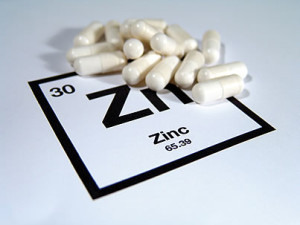Contents
You will learn
[success]
- How many people already have Diabetes Type 2
- About the risk developing Type 2 Diabetes and how to reduce it
- What detrimental effects fluctuating sugar levels have on our bodies
- Which micro nutrients can help you avoid or combat Type 2 Diabetes
[/success]
Statistics and Risk
In 2010 in England alone, there were approximately 3.1 million people aged 16 or over with diabetes (both diagnosed and undiagnosed). By 2030, this figure is expected to rise to 4.6 million, with 90% of those affected having type 2 diabetes.
In terms of age groups, about one in 20 people aged over 65 and around one in five people aged over 85 have diabetes. Type 2 diabetes is now becoming more common in children and in young people.
The number of people with type 2 diabetes is increasing in the UK, as it is more common in people who are overweight or obese. It also tends to run in families. It is around five times more common in South Asian and African-Caribbean people (often developing before the age of 40 in this group). It is estimated that there are around 750,000 people in the UK with type 2 diabetes who have not yet been diagnosed with the condition.
How likely are you to develop diabetes?
The after the age of 45, the risk of type 2 diabetes significantly increases. If you have family members with this disease, there is also a higher risk of developing the disease.
Although it isn’t hereditary, pre-disposition to other health issues that could influence the development of diabetes can be a factor.
People are also susceptible to type 2 diabetes if they are overweight, suffer from hypertension, metabolic syndrome, glucose intolerance, or abnormal lipid levels.
Key factors that can improve insulin tolerance and help to safeguard against the development of type 2 diabetes include maintaining a healthy diet, active weight management, and adequate exercise. With better insulin tolerance, the body can perform better and this will improve overall health and vitality.
Some the greatest risk factors for developing diabetes include:
- Insufficient exercise
- Poor diet
- High blood pressure
- Genetic predisposition
- Increased cholesterol levels
- Nicotine and alcohol use
- Lack of sleep
Natural ways to reduce susceptibility to type 2 diabetes

Fruit and vegetables are enriched with amino acids, vitamins and trace elements
There are certain amino acids, vitamins, and minerals that can help to protect the body from potentially developing diabetes.
Some of the advantages of these compounds include safeguarding against oxidative stress, promoting better insulin sensitivity, and improving glucose tolerance, among other benefits.
Amino acids
Several studies have shown that the amino acids L-arginine and L-carnitine have a positive influence on glucose tolerance and insulin sensitivity. These amino acids help to support the natural endogenous regulation of blood sugar levels.
Vitamins
Increased blood sugar levels lead to elevated oxidative stress. This damages the cells and eventually leads to complications such as diabetic retinopathy, cardiovascular disorders, erectile dysfunction and disorders of the nervous system.
Thus, key antioxidants such as vitamins C, E and glutathione are highly recommended to protect against free radical damage and oxidative stress.
Trace elements
The body’s production and utilization of insulin requires the availability of the trace elements chromium, zinc and magnesium.
Consequences of diabetes and fluctuating blood sugar levels
 Elevated blood sugar levels as a result of undiagnosed, untreated or poorly controlled diabetes leads to serious damage to the blood vessels. The causes a reduction in blood flow, with the smallest vessels impacted first.
Elevated blood sugar levels as a result of undiagnosed, untreated or poorly controlled diabetes leads to serious damage to the blood vessels. The causes a reduction in blood flow, with the smallest vessels impacted first.
Typical consequences include:
- Eye disease (diabetic retinopathy), especially in type I diabetes
- Erectile dysfunction in men
- Increased susceptibility to cardiovascular disease (heart attack risk and stroke risk increase to three to six times compared with the normal population)
- Neuropathies, including a wide range of nervous disorders
- Diabetic foot disease (in the UK around 7000 people with diabetes have amputations of the toe, foot or leg annually)1
Three-pillar strategy in diabetes

A balanced diet, a healthy body weight, and exercise are key factors in protecting the body from Type 2 diabetes
Healthy nutrition, sufficient exercise and avoiding nicotine and alcohol may decrease the risk of developing diabetes.
With specific lifestyle changes, even people with elevated blood sugar levels and impaired insulin sensitivity expect health improvements.
This can help to reduce long-term reliance on insulin injections.
To reduce potential damage from high blood sugar levels, nutrition experts recommend the following approach to these three pillars:
1. Exercise: When you exercise, you strengthen the heart, improve circulation, support healthy joints, and improve overall vitality. Slightly elevated blood sugar levels can often be better controlled with a healthy diet and a good exercise regime.
2. Diet: There are certain food choices that can help to reduce insulin resistance and promote a healthy vascular system.
3. Antioxidants: It is easier to protect the cells by increasing the availability of antioxidants. Again, this is closely linked to diet.
The amino acids, vitamins and trace elements listed below are particularly important for the regulation of blood sugar levels.
L-arginine
L-arginine improves blood circulation
 L-arginine is significantly involved in the control of the vessels. It influences blood pressure and blood flow. L-arginine is the precursor to the formation of the nitrogen oxide molecule, a compound responsible for controlling the widening of blood vessels. There are a large number of studies that have demonstrated an improvement in the blood flow and blood pressure as a result of taking L-arginine.
L-arginine is significantly involved in the control of the vessels. It influences blood pressure and blood flow. L-arginine is the precursor to the formation of the nitrogen oxide molecule, a compound responsible for controlling the widening of blood vessels. There are a large number of studies that have demonstrated an improvement in the blood flow and blood pressure as a result of taking L-arginine.
For people with circularly disorders, supplements containing L-arginine are often recommended. These supplements may also include other ingredients that enhance the action of this amino acid. There are certain vitamins and plant extracts that have been shown to help support the positive effects of L-arginine. These include vitamins B9 (folic acid), B6 and B12, plus pine bark extract.
L-arginine improves insulin sensitivity
In a study carried out in 2001, it was found that taking L-arginine can lead to improved insulin sensitivity2. These results have been confirmed in more recent studies3 4.
L-carnitine
L-carnitine can lead to a significant improvement in glucose metabolism. It improves the use of glucose within the body and reduces insulin resistance5.
Other recommended micronutrients
Vitamin C
Diabetics experience increased oxidative stress. For this reason, the body’s demands on antioxidants such as vitamin C, E and glutathione are much higher. As a result, diabetics often have a vitamin C deficiency compared to people with normal blood sugar levels.
Approximately 30% of the popular don’t have enough vitamin C in their diet to meet the minimum 80 mg daily requirement. In addition to these statistics, compared with healthy subjects, patients with diabetes have up to 30% lower vitamin C levels.
Vitamin C protects the vascular wall (endothelium). An American study has shown that increasing vitamin C intake can significantly improve insulin resistance6.
Zinc

It’s recommended that diabetes increase their zinc intake by 15 mg to 25 mg daily7.
Diabetics excrete two to three times more zinc compared with individuals with normal glucose metabolism.
There are also various medications that increase zinc deficiency. This result is an impaired glucose tolerance, decreasing immunity and increasing susceptibility to illness.
Magnesium
Diabetics often have a low magnesium levels in their blood. Magnesium deficiency impedes the natural management of diabetes. It increases insulin resistance and elevates the risk of retinopathies.
Chromium
The trace element chromium is an essential component of glucose tolerance. It is involved in various processes that promote glucose and insulin metabolism. The intake of chromium may help to better process glucose8.
Lutein and zeaxanthin
Lutein and zeaxanthin are carotenoids that form the precursor of vitamin A. They are particularly needed in high concentrations within the photoreceptor cells of the retina. Studies suggest that lutein and zeaxanthin help to protect photoreceptors from oxidative stress9.These caroteoids are highly recommended for not only the prevention of age-related macular degeneration, but also to protect against diabetic retinopathy.
Omega-3 fatty acids DHA and EPA
The specific omega 3 fatty acids DHA (docosahexaenoic acid) and EPA (eicosapentaenoic acid) occur almost exclusively in fish oil.
The human body cannot produce these fatty acids itself.
However, they are an essential building block of nerves and protecting the inner vessel walls.
These fatty acids are the natural enemies of cholesterol. A good supply of the omega-3 fatty acids DHA and EPA help to reduce the risk of the formation of thrombosis.
Literature references:
- “McInnes, D. (2012) Diabetic foot disease in the United Kingdom: about time to put feet first, Journal of Foot and Ankle Research, Volume 5, Issue 26 (pp.1-7).” ↩
- “Piatti, PM, Monti, LD, et al. 2001 Long-term oral L-arginine administration improves peripheral and hepatic insulin sensitivity in type 2 diabetic patients, Diabetes Care, Volume 24, Issue 5 (pp. 875-880).” ↩
- “Hoang, H., et al. 2013. L–arginine, tetrahydrobiopterin, nitric oxide and diabetes, Current Opinion in Clinical Nutrition & Metabolic Care, Volume 16, Issue 1 (pp. 76-82).” ↩
- “Rajapakse, N., et al. 2013. Insulin-Mediated Activation of the L-Arginine Nitric Oxide Pathway in Man, and Its impairment in diabetes, PloS one, Volume 8, Issue 5.” ↩
- “Giancaterini, A. et. al. 2000. Acetyl-L-Carnitine infusion Increases glucose disposal in type 2 diabetic patients, Metabolism, Volume 49, Issue 6 (pp.704-708).” ↩
- “Paolissimo, G. et al. 1995. Metabolic benefits deriving from chronic vitamin C supplementation in aged non-insulin-dependent diabetics. Journal of the American College of Nutrition, Volume 14, Issue 4 (pp. 387-392).” ↩
- “Grober, U. 2008. Orthomolecular Medicine. 3rd Edition, page 245.” ↩
- “Anderson, R., et al. 2000. Chromium in the prevention and control of diabetes. Diabetes Metabolism, Volume 26, Issue 1, (pp. 22-27).” ↩
- “Chucair, A., et al. 2007. Lutein and zeaxanthin protect photoreceptors from apoptosis induced by oxidative stress: relation with docosahexaenoic acid. Investigative Ophthalmology & Visual Science, Volume 48, Issue 11, (pp. 5168-77).” ↩

